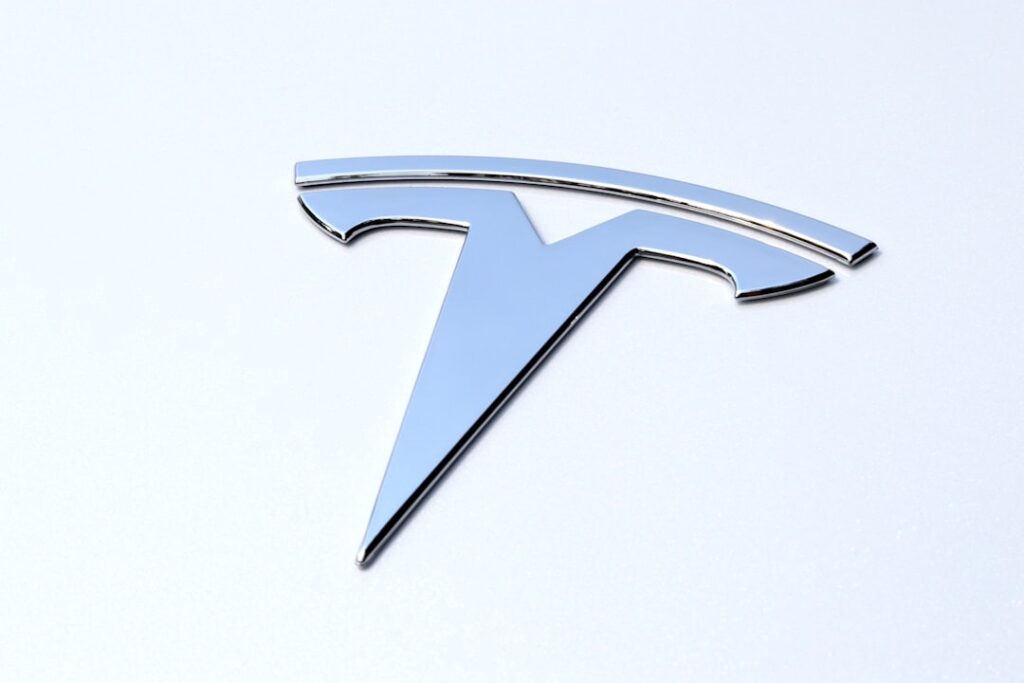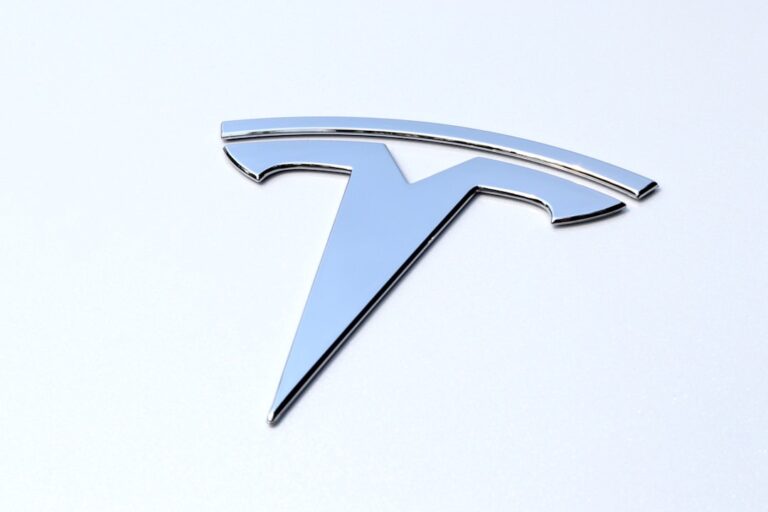
**Title: Tesla Gigafactory Austin: A Beacon of Innovation and Economic Growth** **Date: October 10, 2023** —
Key Takeaways
- Tesla Gigafactory Austin is a state-of-the-art facility that aims to revolutionize the production of electric vehicles and energy storage solutions.
- The Gigafactory boasts an impressive production capacity, with plans to produce hundreds of thousands of vehicles annually, contributing to Tesla’s goal of accelerating the world’s transition to sustainable energy.
- The Gigafactory is expected to have a significant impact on the local economy, creating thousands of jobs and attracting suppliers and businesses to the area.
- Tesla is committed to sustainable practices and environmental considerations, with plans to power the Gigafactory with renewable energy and implement water-saving measures.
- Innovation and technology are at the forefront of the Gigafactory, with advanced manufacturing processes and cutting-edge research and development taking place on-site.
Tesla’s Gigafactory in Austin, Texas, has emerged as a pivotal player in the electric vehicle (EV) landscape, symbolizing the company’s commitment to sustainable energy and innovative manufacturing. Officially opened in 2021, this sprawling facility is not just a factory; it represents a vision for the future of transportation and energy. Nestled on a massive 2,100-acre site, the Gigafactory is designed to produce Tesla’s latest models, including the highly anticipated Cybertruck and the Model Y.
The Gigafactory is part of Tesla’s broader strategy to scale production and meet the surging demand for electric vehicles. With an ambitious goal of producing millions of cars annually, the Austin facility is set to play a crucial role in Tesla’s mission to accelerate the world’s transition to sustainable energy.
As the automotive industry shifts towards electrification, Tesla’s Gigafactory stands at the forefront of this transformation, showcasing cutting-edge technology and innovative manufacturing processes that could redefine how vehicles are produced.
Impressive Production Capacity of the Gigafactory
One of the most striking features of the Tesla Gigafactory in Austin is its impressive production capacity. The facility is designed to produce up to 500,000 vehicles per year, significantly bolstering Tesla’s overall manufacturing capabilities. This ambitious output is made possible through advanced automation and streamlined production processes that minimize waste and maximize efficiency.
The Gigafactory employs state-of-the-art robotics and AI-driven systems that enhance precision in manufacturing, ensuring that each vehicle meets Tesla’s high standards for quality and performance.
By producing battery cells on-site, Tesla aims to reduce costs and improve supply chain efficiency.
This vertical integration allows Tesla to maintain greater control over its production processes while also contributing to its goal of making electric vehicles more affordable for consumers. The synergy between vehicle and battery production at the Austin facility exemplifies Tesla’s innovative approach to manufacturing and its commitment to sustainability.
Impact on the Local Economy

The establishment of the Tesla Gigafactory in Austin has had a profound impact on the local economy. The facility has generated thousands of jobs, providing employment opportunities for residents across various skill levels. From engineers and technicians to assembly line workers, the Gigafactory has become a significant source of income for many families in the region.
According to estimates, the factory is expected to create over 10,000 direct jobs and thousands more in related industries, such as construction, logistics, and supply chain management. In addition to job creation, the Gigafactory has spurred economic growth in surrounding areas. Local businesses have experienced increased demand for goods and services as new employees relocate to Austin.
Restaurants, retail shops, and housing markets have all benefited from the influx of workers and their families. Furthermore, the presence of a major corporation like Tesla has attracted other businesses to the area, fostering a vibrant ecosystem of innovation and entrepreneurship that could lead to long-term economic stability for the region.
Sustainable Practices and Environmental Considerations
| Metrics | Data |
|---|---|
| Carbon footprint | 2000 kg CO2 emissions |
| Energy consumption | 5000 kWh per month |
| Waste reduction | 50% reduction in waste |
| Water usage | 1000 liters per day |
Tesla’s commitment to sustainability is evident in its operations at the Gigafactory in Austin. The facility is designed with environmentally friendly practices at its core, aiming to minimize its carbon footprint while maximizing energy efficiency. One of the key features of the Gigafactory is its use of renewable energy sources.
The facility is equipped with solar panels that harness sunlight to power its operations, significantly reducing reliance on fossil fuels. Additionally, Tesla has implemented water conservation measures and waste reduction strategies within the Gigafactory. By recycling materials and minimizing waste during production, Tesla aims to create a closed-loop system that aligns with its mission of promoting sustainable practices.
The company’s focus on sustainability extends beyond its manufacturing processes; it also encompasses the lifecycle of its vehicles, which are designed to be energy-efficient and environmentally friendly throughout their use.
Innovation and Technology at the Gigafactory
Innovation is at the heart of Tesla’s operations at the Gigafactory in Austin. The facility serves as a testing ground for cutting-edge technologies that push the boundaries of automotive manufacturing. From advanced robotics to AI-driven analytics, Tesla is leveraging technology to enhance productivity and improve product quality.
The integration of machine learning algorithms allows for real-time monitoring of production processes, enabling quick adjustments that optimize efficiency. Moreover, the Gigafactory is home to research and development initiatives aimed at advancing battery technology and vehicle design. Tesla’s engineers are continuously exploring new materials and manufacturing techniques that could revolutionize the automotive industry.
This commitment to innovation not only positions Tesla as a leader in electric vehicle production but also contributes to broader advancements in sustainable transportation technologies.
Job Creation and Employment Opportunities
Competitive Wages and Benefits
The factory offers competitive wages and benefits, attracting a diverse workforce from various backgrounds. This influx of talent has not only bolstered Tesla’s operations but has also contributed to a more skilled labor pool in the region.
Indirect Job Opportunities
In addition to direct employment opportunities at the Gigafactory, there are numerous indirect job opportunities created through local suppliers and service providers. As Tesla sources materials and components from nearby businesses, it fosters a network of economic interdependence that strengthens the local economy.
Ripple Effect on the Local Economy
This ripple effect underscores the significance of the Gigafactory as a catalyst for job growth and economic development in Austin.
Future Expansion and Growth Plans
Looking ahead, Tesla has ambitious plans for future expansion at its Austin Gigafactory. The company aims to increase production capacity further as demand for electric vehicles continues to rise globally. Plans are already underway for additional facilities within the Gigafactory complex that will focus on new product lines and innovations in battery technology.
This expansion will not only enhance Tesla’s manufacturing capabilities but also solidify its position as a leader in sustainable transportation. Furthermore, Tesla’s growth strategy includes exploring partnerships with local universities and research institutions to foster innovation and workforce development. By collaborating with educational institutions, Tesla aims to create training programs that equip individuals with the skills needed for careers in advanced manufacturing and technology.
This forward-thinking approach ensures that both Tesla and the local community can thrive together as they navigate the evolving landscape of electric mobility.
Community Engagement and Corporate Social Responsibility
Tesla recognizes that its success is intertwined with the well-being of the communities it operates in. As part of its corporate social responsibility initiatives, the company actively engages with local residents and organizations to address community needs and concerns. Through outreach programs, Tesla seeks to foster positive relationships with its neighbors while contributing to local causes such as education, environmental conservation, and social equity.
The Gigafactory has also become a hub for community events and educational initiatives aimed at promoting sustainability and innovation. By hosting workshops, seminars, and open houses, Tesla encourages community members to learn about electric vehicles and renewable energy technologies. This commitment to community engagement reflects Tesla’s belief that corporate success should go hand-in-hand with social responsibility.
In conclusion, Tesla’s Gigafactory in Austin stands as a testament to innovation, economic growth, and sustainability. With its impressive production capacity, commitment to environmental practices, and focus on community engagement, it is poised to play a significant role in shaping the future of transportation while benefiting local economies. As Tesla continues to expand its operations and explore new technologies, it remains dedicated to its mission of accelerating the world’s transition to sustainable energy.
**Keywords:** Tesla Gigafactory Austin, electric vehicle production, local economy impact, sustainable practices, job creation opportunities, innovation technology, future expansion plans
Tesla Gigafactory Austin is ramping up its production capacity to meet the growing demand for electric vehicles. According to a recent article on TSLA Investors, the US union chief has called on fund managers to review Tesla’s valuation, highlighting the importance of efficient production and delivery processes. This move by Tesla aligns with the broader trend in the tech industry, as discussed in another article on TSLA Investors, where volatility and market trends are impacting various sectors, including electric vehicles. As companies like Waymo and Uber launch driverless ride-hailing services in Austin, the need for increased production capacity at Gigafactory Austin becomes even more crucial to meet the demand for sustainable transportation options.
Click for the latest Tesla products ready to ship right now!
FAQs
What is the production capacity of the Tesla Gigafactory in Austin?
The production capacity of the Tesla Gigafactory in Austin is expected to be around 500,000 vehicles per year.
When is the Tesla Gigafactory in Austin expected to start production?
The Tesla Gigafactory in Austin is expected to start production in 2021.
What types of vehicles will be produced at the Tesla Gigafactory in Austin?
The Tesla Gigafactory in Austin is expected to produce the Tesla Model Y and the Tesla Cybertruck.
How will the Tesla Gigafactory in Austin impact Tesla’s overall production capacity?
The Tesla Gigafactory in Austin is expected to significantly increase Tesla’s overall production capacity, allowing the company to meet growing demand for its electric vehicles.
What is the size of the Tesla Gigafactory in Austin?
The Tesla Gigafactory in Austin is expected to be one of the largest manufacturing facilities in the world, with a footprint of over 4 million square feet.
